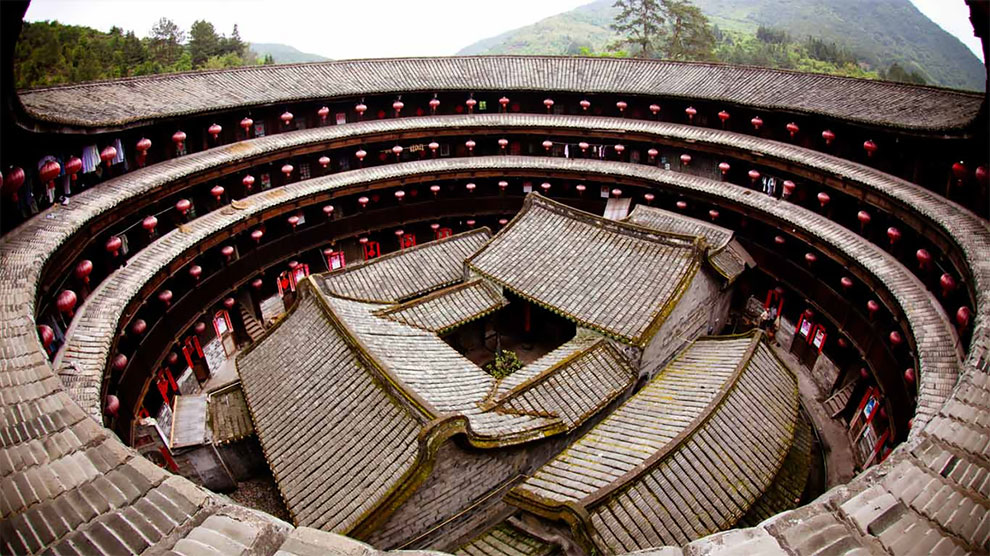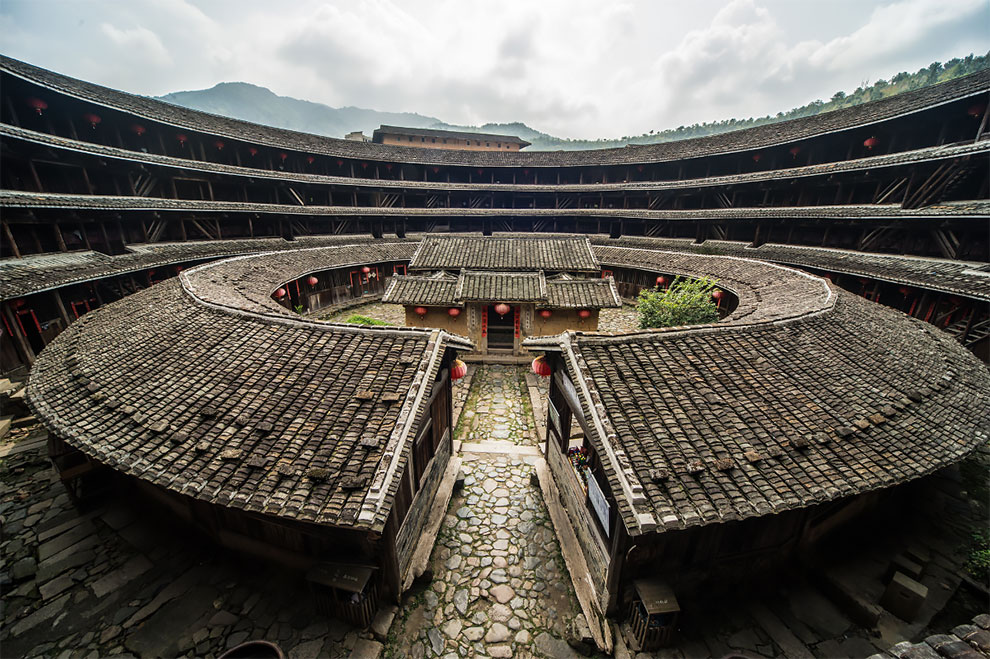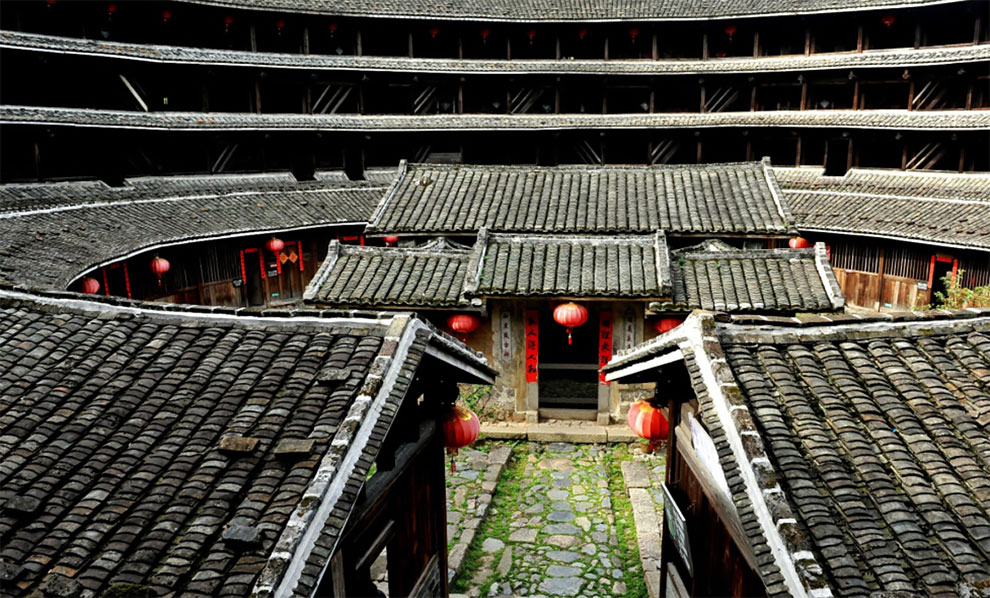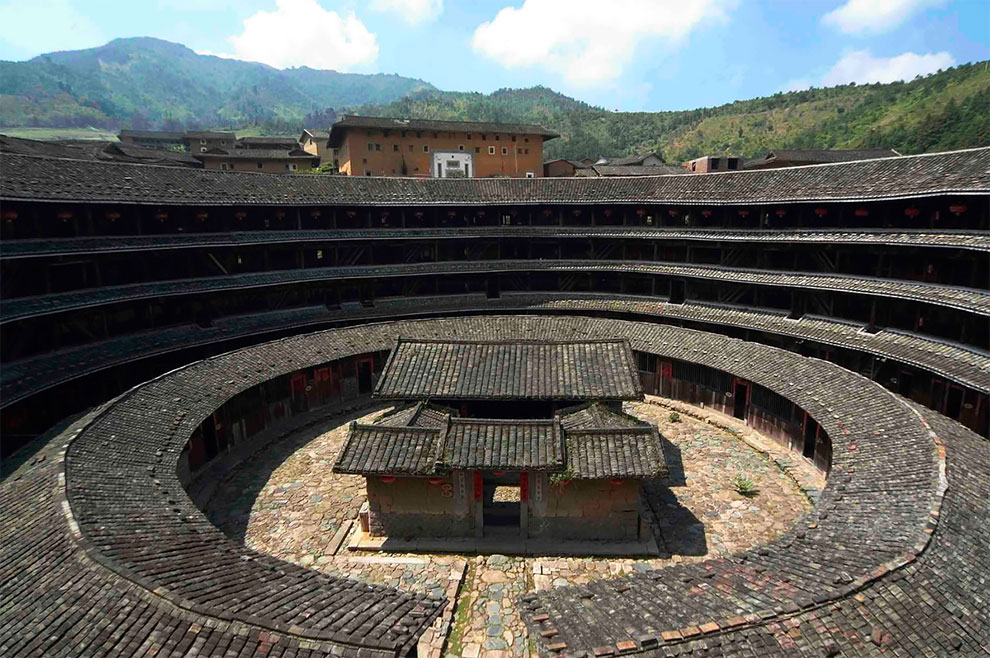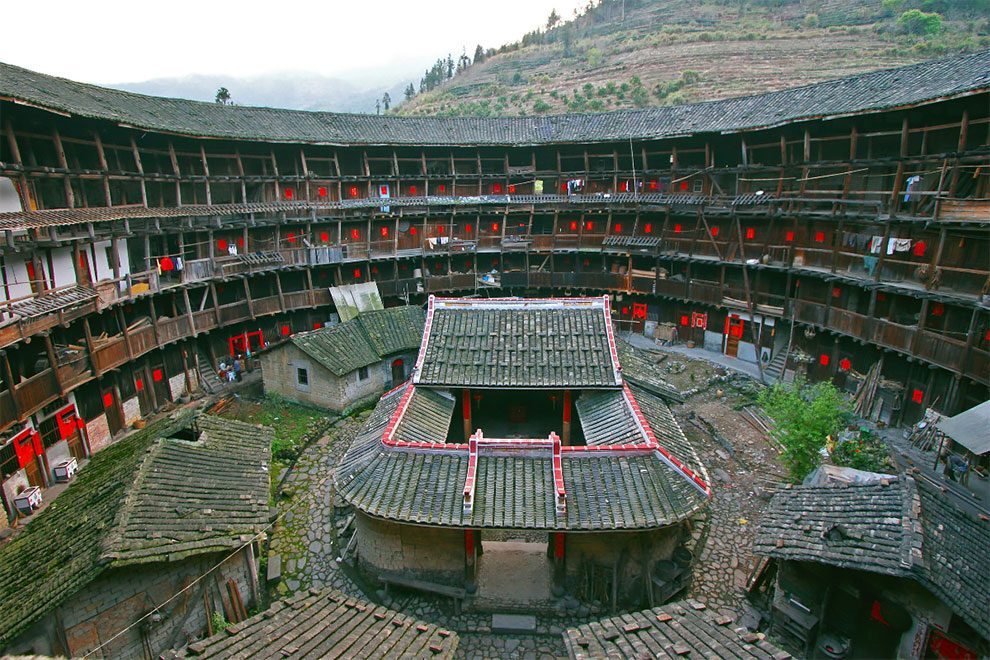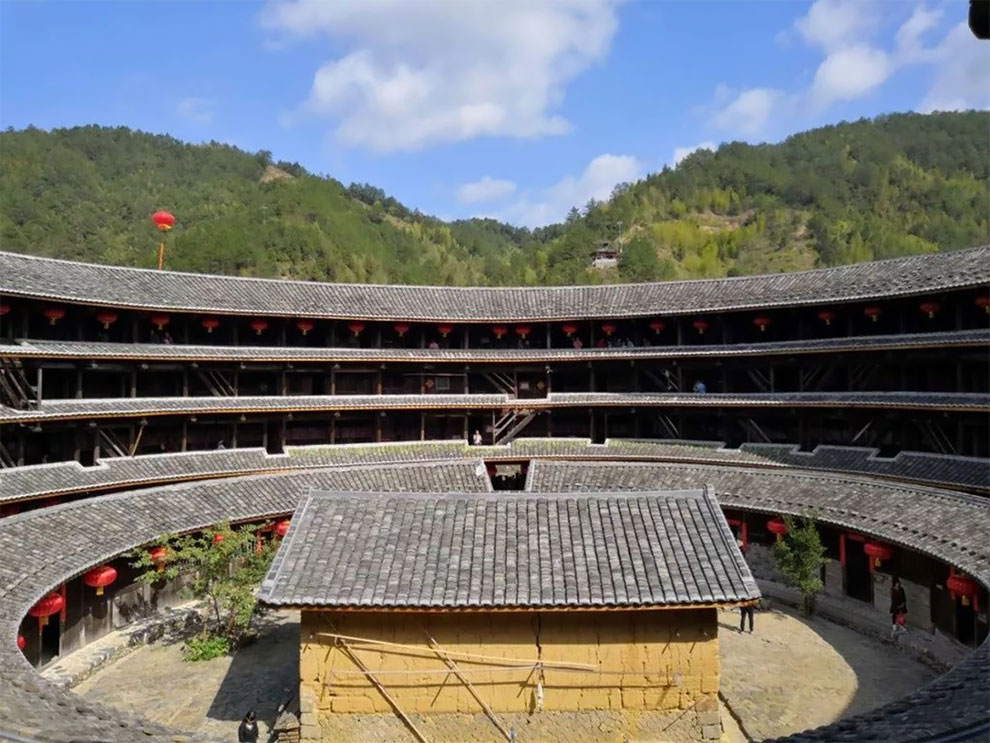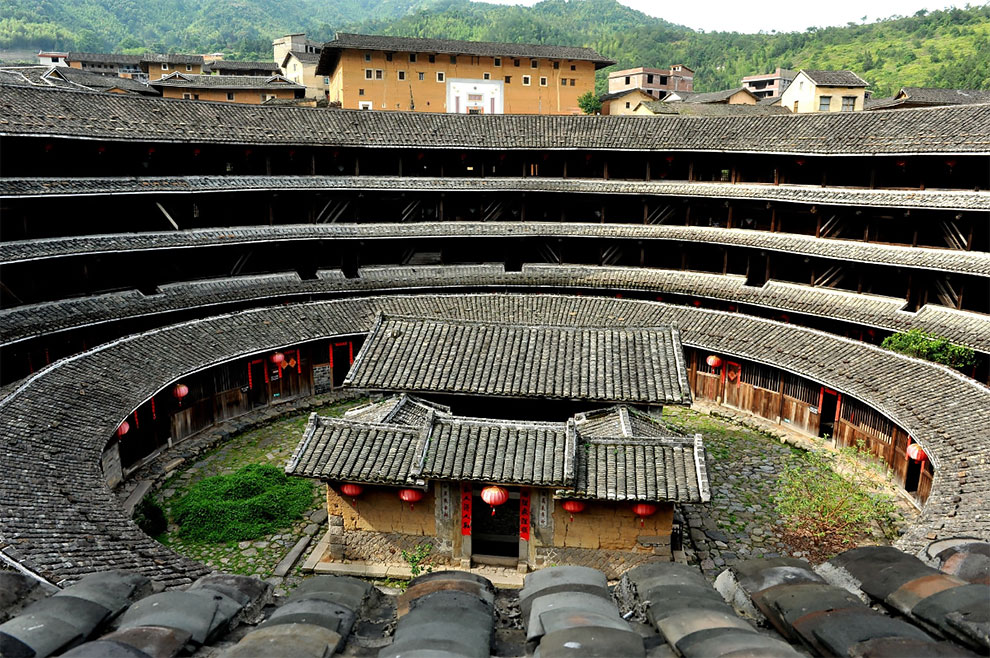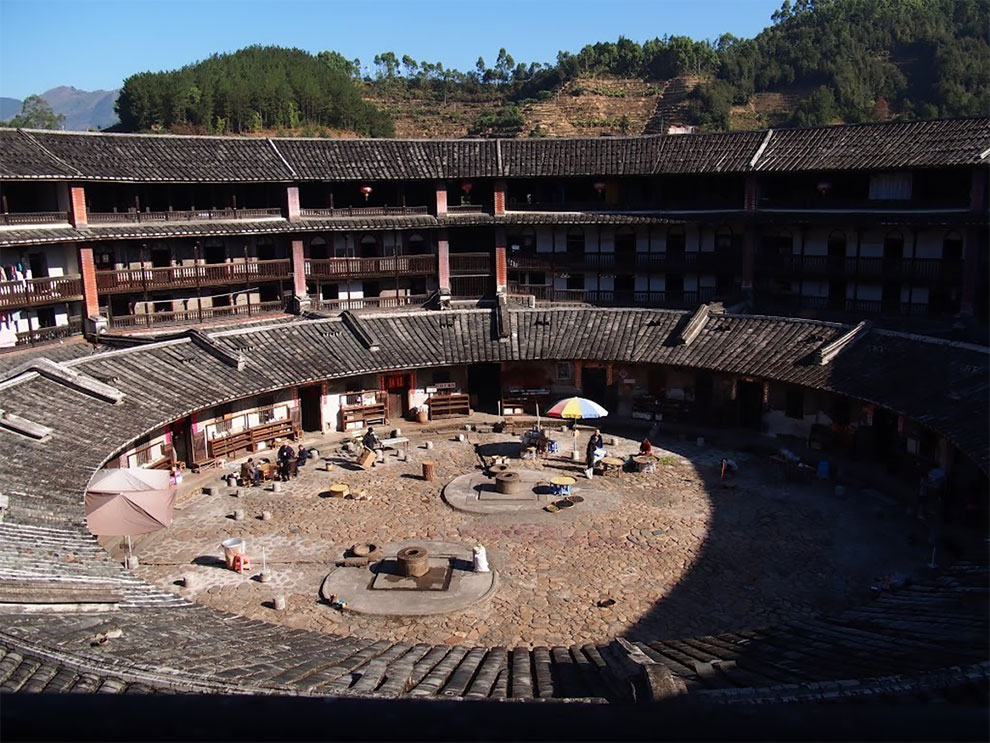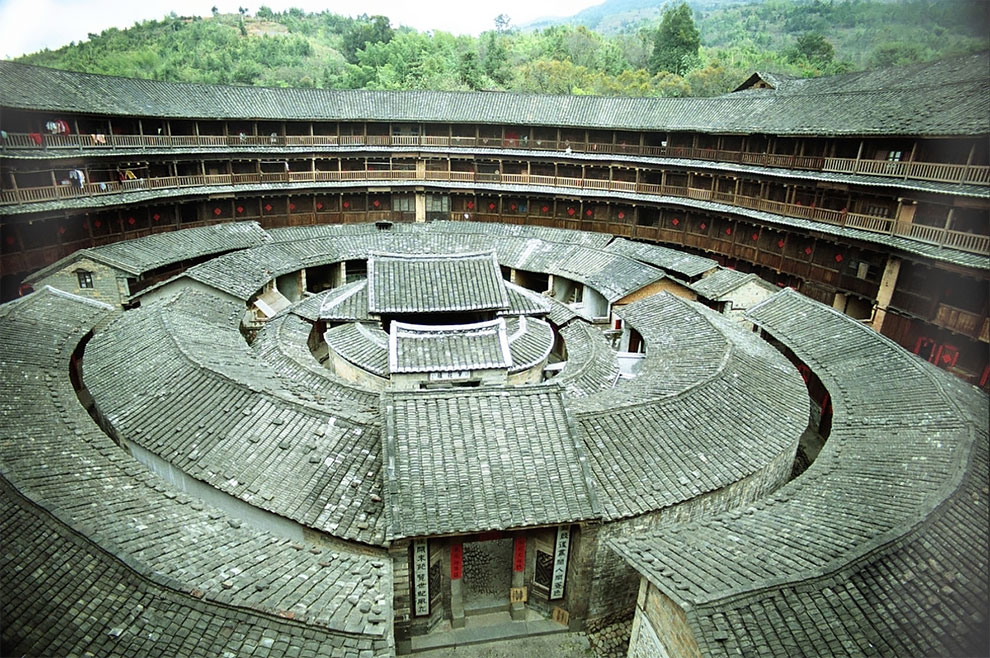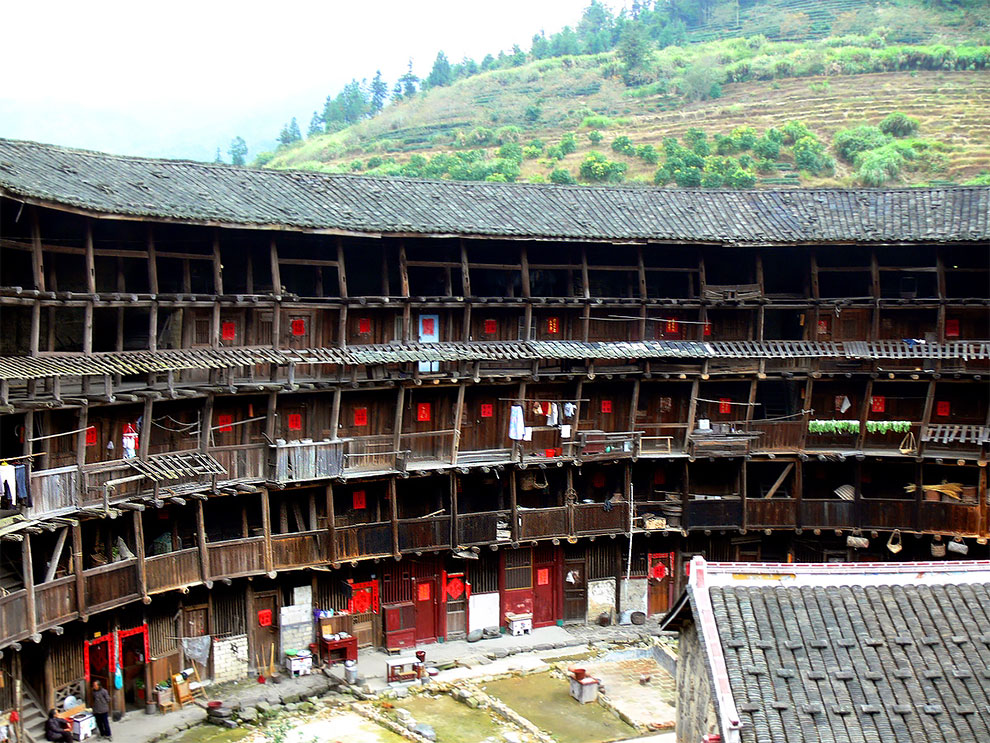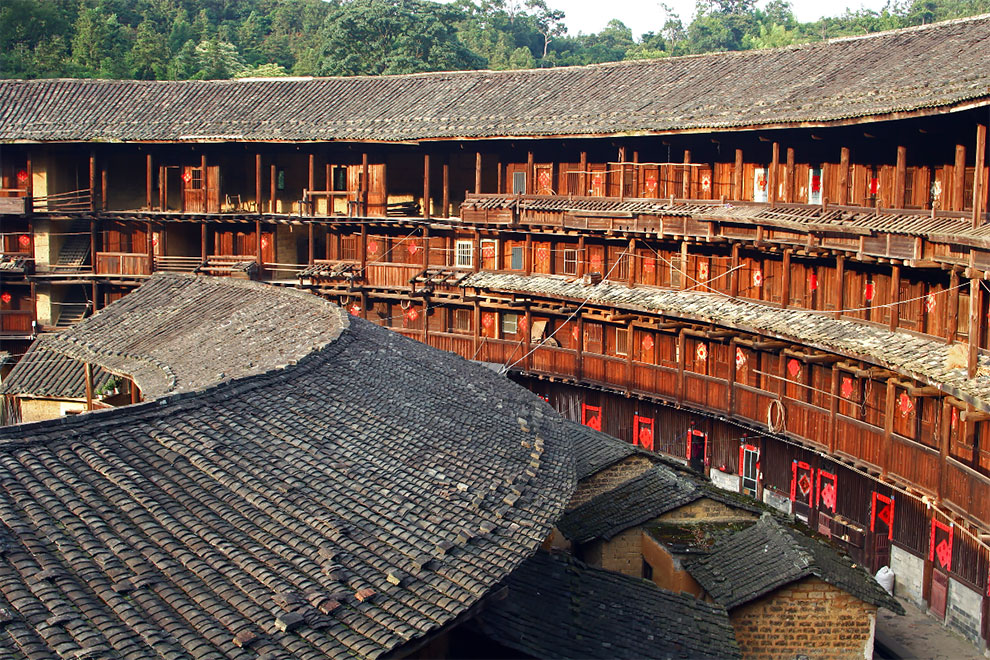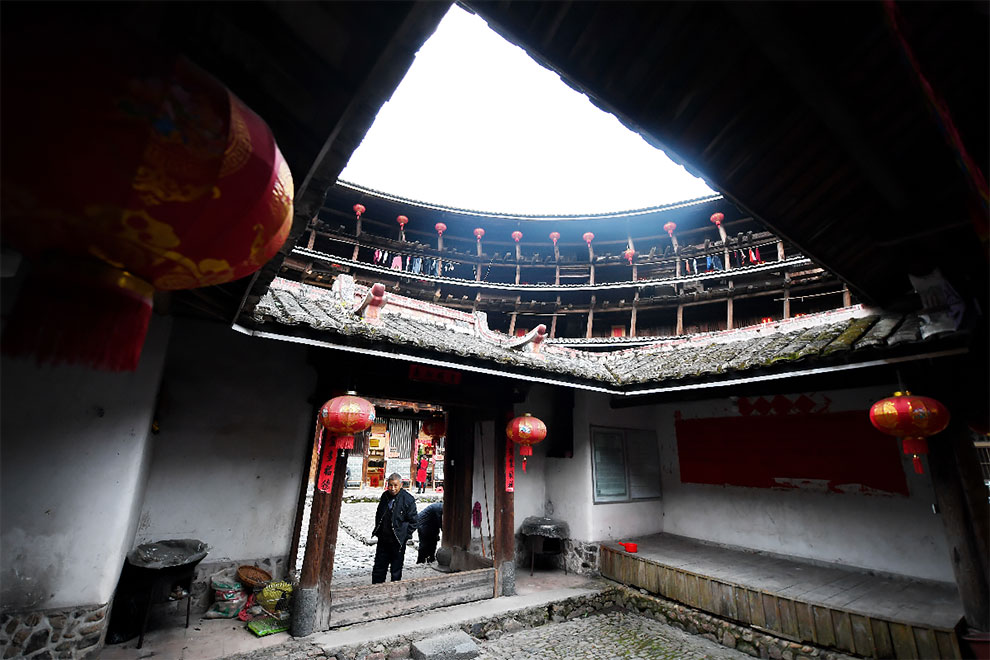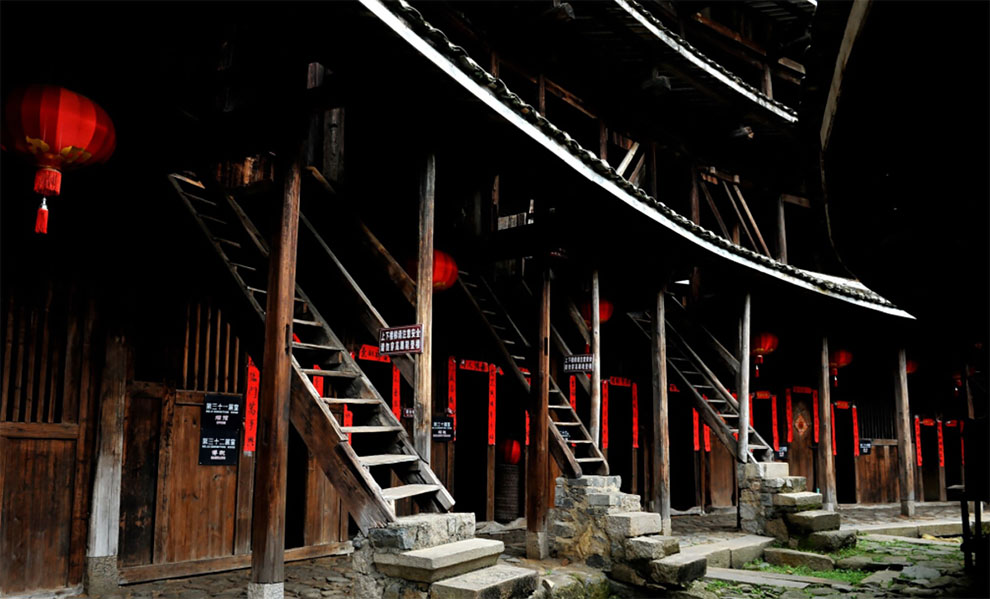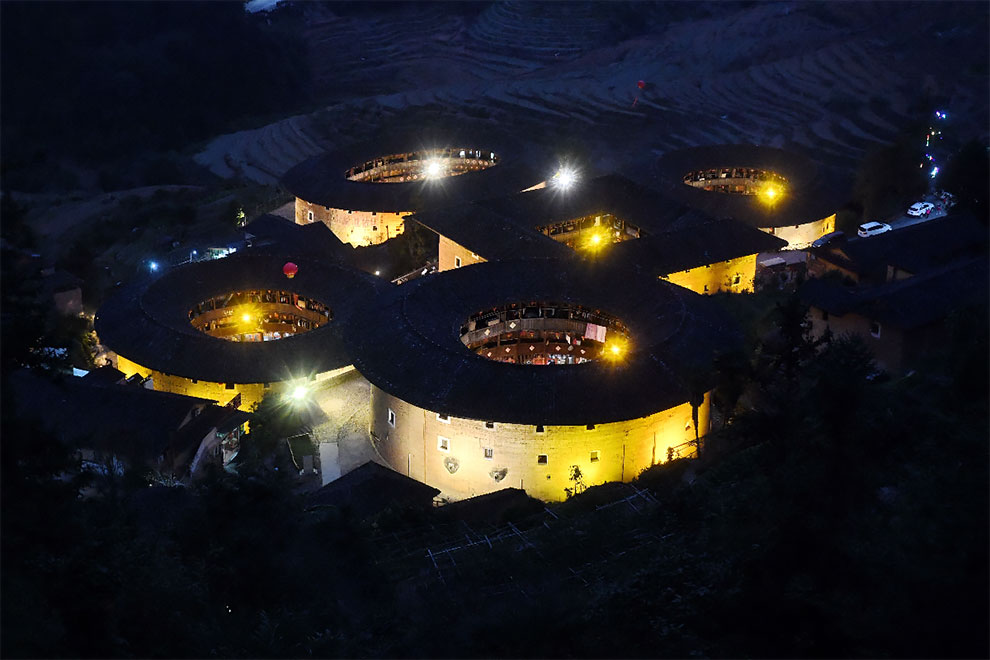Wonderful Photos of Fujian Tulou, the Unique China’s Hakka Earthen Buildings

The Hakkas who settled in mountainous south western Fujian province in China developed unique architectural buildings called tulou, literally meaning earthen structures.
The Hakkas set up these unique homes to prevent attack from bandits and marauders. The tulou are either round or square, and were designed as a large fortress and apartment building in one. Structures typically had only one entranceway and no windows at ground level. Each floor served a different function – the first hosts a well and livestock, the second is for food storage and the third and higher floors contain living spaces. They were mostly built between the 12th and the 20th centuries.
h/t: vintag.es
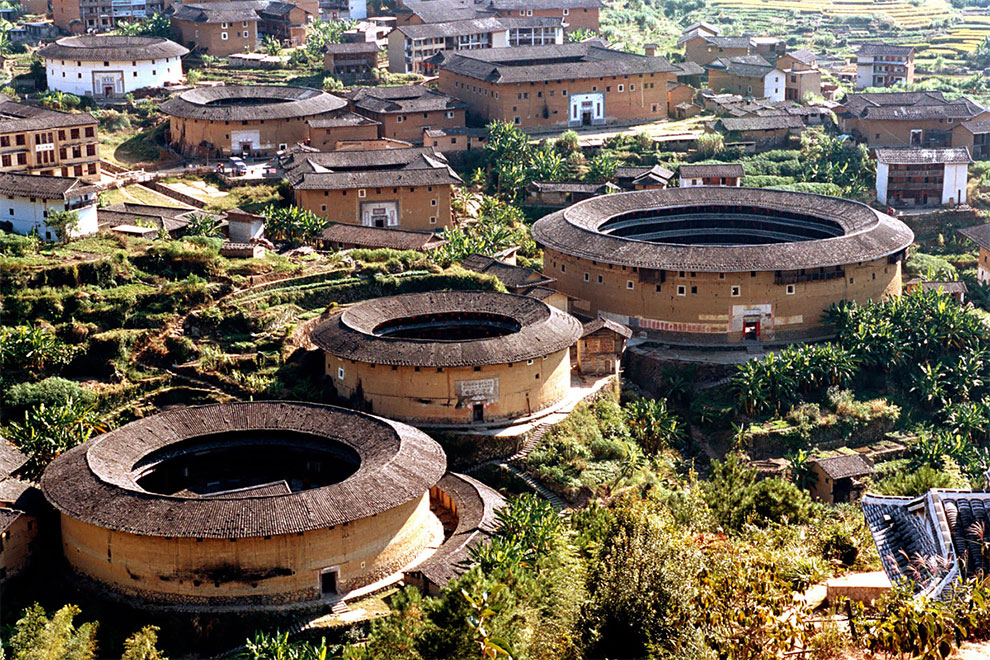
It was during the wartime period of Yongjia that the Hakka people fled their home in the central plains. This occurred between 304 and 312 A.D. After traveling from place to place, the Hakka people decided to seek shelter in the mountainous region of southwestern Fujian. Between the rugged mountains and long rivers, they felt safe from invaders and war. They started to build wooden shelters and huts with thatched roofs for protection. Embarking on more peaceful lives with abundant resources, the people here began to flourish.

As the population grew, housing became more of a problem for the Hakka people. The group wanted to provide shelter for everyone, but they also wanted to build a community that would inspire. The Hakka people began to construct the tulou. It isn’t clear where this building style first came from, but over the years, they perfected it. Many members of the group continued to be nomadic. As they moved from place to place, they built tulou for protection. This is why these buildings can be found in different regions along the Fujian coast.
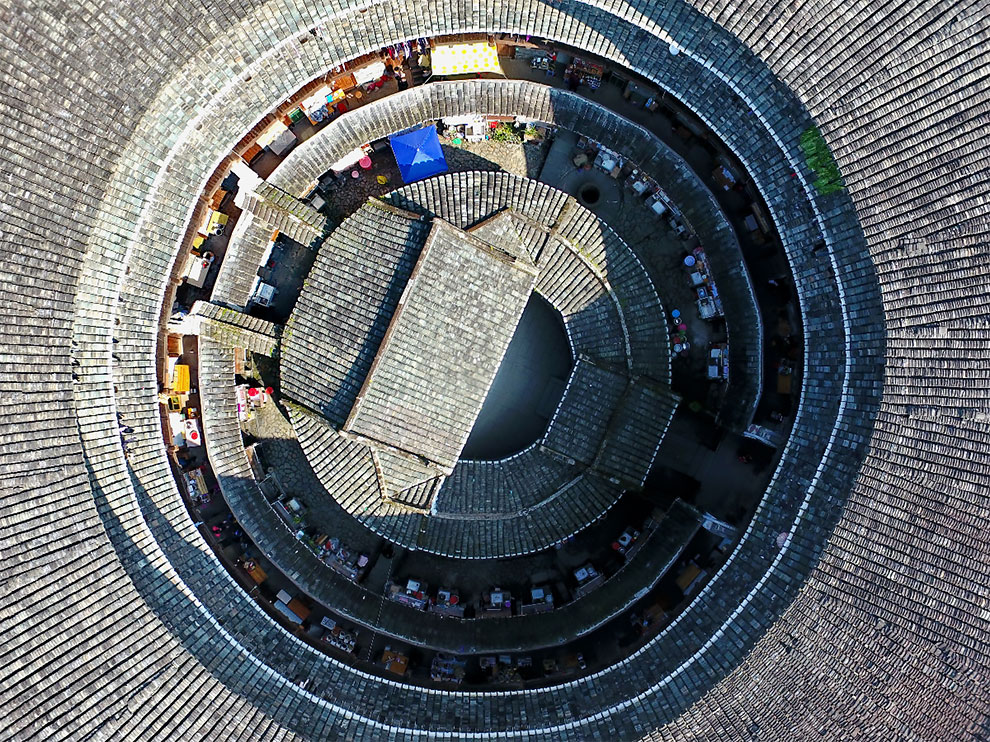
The rammed-earth technique used for building the structures is difficult to pin down by date. However, it’s believed that the technique was developed during the Shang Dynasty from 1766-1122 B.C. Having their building technique perfected, and honing skills in the plastic arts, the Hakka community gained great wealth. They thrived, and continue to do so today, especially with the growing interest from tourists.
